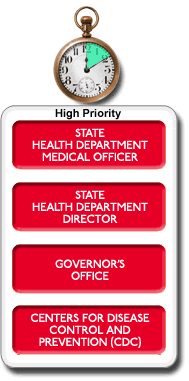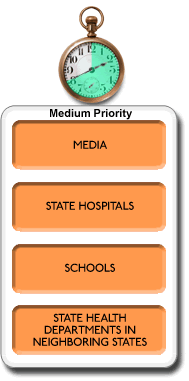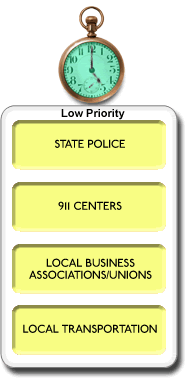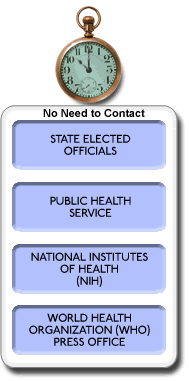
Part of an effective health response is solid pre-planning. By completing the Notification/Coordination Roster beforehand, you can assure that those with whom you need to coordinate or notify get the information quickly. Remember that those who are on the roster should have your highest priority. In an event, every second counts. Spend your time wisely, first giving information to those who need it most, then providing information to others who are not on the roster.
In this activity, you will be given several groups and individuals who should have been notified or coordinated with during this crisis. Not all groups and individuals on the list fall into this category. Among those who do, some have a higher priority than others. Drag the appropriate groups or individuals into one of three priority areas:
- High Priority - Contact immediately, preferably within two hours
- Medium Priority - Contact as soon as possible, preferably within eight hours
- Low Priority - Contact after 1st and 2nd priorities are contacted, preferably within 24-48 hours
Place those with whom you do not need to coordinate, or contact only as means allow, into the “No Need to Contact” area. When you have finished, click “How Did I Do?” to compare your answers with Roshanna’s.



